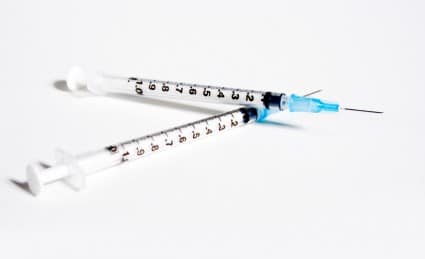 Testosterone Gels Versus Testosterone Injections
Testosterone Gels Versus Testosterone Injections
You’ve been to the doctor and he’s checked your testosterone levels and confirmed that your lack of energy, recent fat gain, irritable moods, declining sex drive and erectile performance, and lack of focus and concentration are related to low testosterone. There’s no way you want to continue to live with those symptoms. Even your wife is getting frustrated with your lack of interest in the bedroom. You decide you want to be treated. But, what’s the best way? Should you apply a topical cream or gel? Or what about testosterone injections? Do they work? Do they hurt? How often must I be injected? And, who injects me? These are all good questions that we will tackle today!
The Ins and Outs of Testosterone Injections
First, testosterone injections are very safe and an effective way to treat testosterone deficiency. Optimal blood levels of testosterone levels can always be achieved through testosterone injections. That is not always the case with testosterone gels or creams. Such products are not always adequately absorbed to achieve necessary testosterone levels.
Some guys are hesitant about testosterone injections because of the thought of being injected, but testosterone can be self injected with minimal discomfort. Unlike the need to inject insulin daily, and sometimes more than once daily, testosterone injections are typically administered weekly or twice weekly. Some physicians insist that patients come to office and have a nurse or medical assistant perform the injections. In my opinion, that is not necessary. Testosterone injections can be easily self-admininstered – diabetics inject themselves afterall.
Needles and Syringes
I typically have patients use two needles – a larger bore needle like an 18 gauge to withdraw testosterone from the vial, and then a smaller bore and shorter needle like an half-inch 27 gauge needle to actually inject testosterone into the body (the smaller the gauge the larger the bore). Injectable testosterone comes in a oil suspension which is somewhat viscous. It can be difficult and slow to withdraw the needed dose of testosterone into the syringe using a small bore needle, though one can push testosterone thr0ugh a smaller bore needle. So that’s why I have patients use two needles. Also, there is some deformation of the needle when it is inserted into the rubber stopper on the vial. This makes the needle more blunt and potentially more painful if also used to inject into the tissue. So it’s best not to withdraw medication and inject with the same needle.
When doing injections you want to use the smallest syringe that accomodates the dose of any medication you are injecting. With testosterone injections a one ml syringe is all that is really needed. This makes it easier to inject the proper dose. For instance, it is much easier to accurately measure 0.5 ml of testosterone using a one ml syringe than it is using a 10 ml syringe. Plus, the force generated by pushing the plunger of a larger syringe is greater than a smaller syringe potentially causing more discomfort.
Using a half inch 27 gauge needle barely causes any discomfort – slight sting at best – when inserted into the body. Some docs are even having patients use a smaller 30 gauge needle (insulin needle) and have patients inject smaller doses daily. I’m not sure there’s really any advantage to small daily injections opposed to weekly or twice weekly injections since injectable testosterone has a half-life of 7-8 days.
The syringes shown in the photograph for this article are one ml syringes. The needles shown in the photo are 25 gauge and appear to 3/4 inch to one inch in length. A 27 gauge needle would be thinner.
Testosterone Injection Site
Where to inject? In the old days a big dose of testosterone meant to last a month would be injected into a patients buttock using a relatively long needle. Injecting in the buttocks is hard to do by one’s self, and thus, such injections were performed by medical personnel. Plus, care must be given to avoid the sciatic nerve.
I have patients inject testosterone into their upper thigh usually just below where the underwear stops on the thigh. That area has few nerve fibers making the injections not uncomfortable. The more distal or away from the trunk you go (arms or legs) the higher the concentration of nerve fibers. That’s one reason why vaccines are given in the upper arm, rather than the lower arm.
Tesosterone injections performed into the thigh are done sitting down and keeping the thigh muscles relaxed. The area to be injected is identified and swabbed with alcohol. The needle attached to syringe with proper dose of testosterone is then inserted using a relatively quick motion (no need to jab the needle into the site, but you don’t want to “tease” into the tissue either) straight down perpendicular to the surface.
Using a short needle there is no concern of hitting a blood vessel, though it’s wise to always aspirate (pull back on the plunger of the syringe with needle in the tissue) to make sure you have not hit a blood vessel. If you do see blood, you simply withdraw the needle, apply pressure until bleeding stops, and move your injection site. If no blood, you are cleared to inject. Again, the suspension is viscous and a small needle is being used so it will take some time to inject the entire amount of testosterone into the thigh. Simply apply a steady force to the syringe until all medication is injected. Needles and syringes are used only one time and discarded. That’s all there is to it.
Performing testosterone injections is not nearly as complicated as it may sound. In fact, even a guy can master it!
